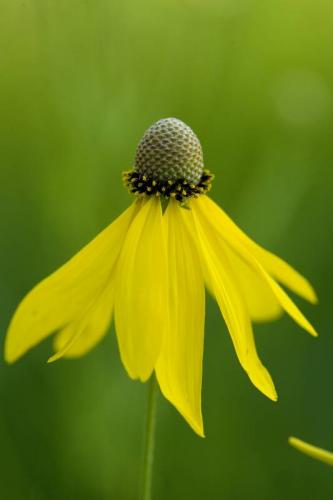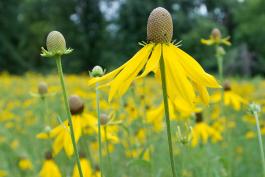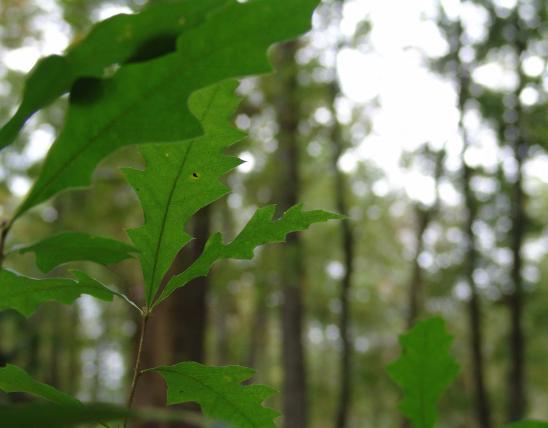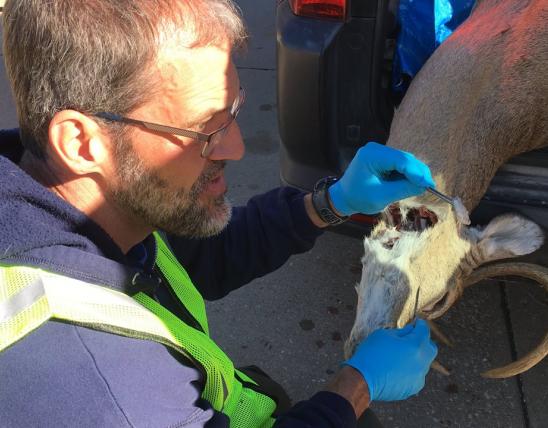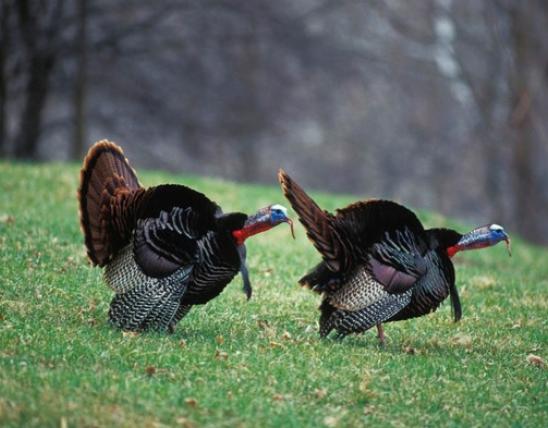
Perennial herb with one to several slender, hairy stems growing from a horizontal rootstock. Flowerheads with 6–15 drooping yellow ray florets to 3 inches long. The disk rises conelike above the rays, reaching about 1 inch in length. It starts out gray, then turns brown as the florets open. Blooms May–September. Leaves pinnately divided into 3–7 segments, narrowly lanceolate, toothed.
Similar species: Of the two other prairie coneflowers (genus Ratibida) in Missouri, only one is likely to be encountered. Longhead prairie coneflower, or Mexican hat (R. columnifera), is scattered in the western half of the state. It grows from a taproot, and its conelike disk reaches 2 or even 2¾ inches long. Other Missouri plants called coneflowers include 5 species of Echinacea and 9 species of Rudbeckia.
Height: 15 inches to 5 feet.

Scattered nearly statewide, but absent from the Southeast Lowlands and nearby Ozark counties.
Habitat and Conservation
Occurs in upland prairies, glades, savannas, openings and edges of rich to dry upland forests, and rarely banks of streams; also fencerows, pastures, railroads, and roadsides. It is also cultivated as a garden ornamental.
Status
We have three genera of plants called coneflowers in Missouri. Those in the genus Ratibida are called prairie coneflowers. Other Missouri plants called coneflowers include species of Echinacea, which all have simple leaves, spiny disks, and purple or pinkish flowers, except for yellow coneflower (E. paradoxa). Rudbeckias, such as black-eyed Susan, are also often called coneflowers. Like echinaceas, their leaves are usually unlobed, but they lack the spiny disks.
Human Connections
Prairie coneflowers are popular native plants for flower gardening. Native Americans used them for a variety of medicinal uses and also made tea out of the flowers and leaves. If you rub the disks, they smell something like anise.
Ecosystem Connections
Bees, butterflies, and other insects are drawn to the flowers, where they receive nectar in exchange for their cross-pollination services. Herbivores ranging from caterpillars to woodchucks eat the leaves.



